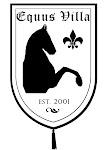
Over a century ago, during the Victorian era, one of the favorite pastimes was collecting small, illustrated advertising cards that we now call trade cards. These trade cards evolved from cards of the late 1700s used by tradesmen to advertise their services. Although examples from the early 1800s exist, it was not until the spread of color lithography in the 1870s that trade cards became plentiful.

By the 1880s, trade cards had become a major way of advertising America's products and services, and a trip to the store usually brought back some of these attractive, brightly colored cards to be pasted into a scrapbook.

Some of the products most heavily advertised by trade cards were in the categories of: medicine, food, tobacco, clothing, household, sewing, stoves, and farm.

The popularity of trade cards peaked around 1890, and then almost completely faded by the early 1900s when other forms of advertising in color, such as magazines, became more cost effective.

Although trade card collecting began over 100 years ago, today's strong interest in trade cards began relatively recently. Trade cards that were bought for ten cents thirty years ago frequently bring ten dollars or more in today's market--and some have even sold for over a thousand dollars.

On many Victorian Parlor tables, a place of honor was reserved for the Bible, family album, post card album and a huge scrapbook. In the latter were lovely pasted advertising cards which were acquired by different members of the family.

When members of the family went out to shop, they were given colorful trade cards with their purchases. At the local food store, many of these cards came packaged in tins of teas and coffees. Each member of the family would have been quite delighted to receive these free cards.

The color cards were the most cherished. Lithography had just been introduced and any colorful bits of paper were treasured. As family members brought new cards home, everyone became excited. The family members began to go to many different stores to see if they had any cards and if they would look nice in their books. Thus we have the beginning of trade card collecting.


Modern Trading Cards:
Topps Chewing Gum, Inc., now known as The Topps Company, Inc., started inserting trading cards into bubble gum packs in 1950 — with such topics as TV and film cowboy Hopalong Cassidy; "Bring 'Em Back Alive" cards featuring Frank Buck on big game hunts in Africa; and All-American football cards. Topps introduced the topic of baseball in trading cards in 1951, and Sy Berger created the first modern baseball card, complete with playing record and statistics, produced by Topps in 1952. Topps purchased the Bowman Gum company in 1956. Topps was the leader in the trading card industry from 1956 to 1980, not only in sports cards. Many of the top selling non-sports cards were produced by Topps, including Wacky Packages (1967, 1973–1977), Star Wars (beginning in 1977) and Garbage Pail Kids (beginning in 1985). Topps inserted baseball cards as prizes into packs of gum through 1981, when the gum became a thing of the past and the cards were sold without the gum.



No comments:
Post a Comment